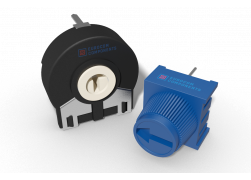Filter
Please note:

Minimum order amount: 500 UAH
Quantity of SMD: multiples 100 pcs
To buy mounting potentiometers in Kiev and Ukraine
In electronics, rotary (mounting) potentiometers are now widely used. These are electronic components that are often used in circuitry. They are adjustable and are considered one of the variable resistors. Under normal conditions, it consists of a rotating/sliding drag system. In layman's terms, the moving contact moves across the body of the resistor to get a portion of the output voltage.
Mounting potentiometer connection method
When using a potentiometer to adjust the constant current, it flows through the sliding arm of the potentiometer and the resistance value increases abnormally due to anodizing. It is recommended to connect the resistor terminal to the negative pole and the slider to the positive pole. If direct current is passed directly through the potentiometer, the anode of the potentiometer is oxidized and damaged, which increases the impedance of the potentiometer. Therefore, it is best to connect the negative side of the current to the terminal in contact with the carbon film, and the positive side to the terminal on the brush (potentiometer contact) terminal.
How to install a mounting potentiometer?
1. When mounting the rotary potentiometer to the panel with a nut, be careful when tightening the nut. The tightening torque must not be too high, so as not to damage the thread.
2. When you need to install a linear slide potentiometer with screws, avoid using screws that are too long, otherwise it may make it difficult to move the sliding handle or even damage the potentiometer itself.
3. During welding or installation, do not apply excessive force to the terminal, otherwise it may cause poor contact or mechanical damage. Try not to bend the terminals back and forth. Terminals bent for more than two weeks may break.
4. When placing the knob on the rotary potentiometer, do not apply excessive axial force to the shaft. The pull/push force must not exceed the push/pull shaft specification specified in the product data sheet.
Rotary potentiometer installation precautions
1. Heat dissipation problem
When using a carbon film potentiometer, the heat from the resistor body causes the temperature of the potentiometer itself to rise. Heat dissipation must be carried out by convection, conduction, radiation, etc., among which a very important method of heat dissipation is heat dissipation through the chassis or bottom plate. If the potentiometer is set incorrectly, heat dissipation will be affected. It can even lead to overheating and damage to the potentiometer. Especially those potentiometers with large power consumption, combined with a serious temperature inside the machine due to the miniaturization and shape of electronic equipment and tools, should pay more attention to heat dissipation. It is usually mounted on a metal base plate with good thermal conductivity to ensure good heat dissipation conditions. At the same time, the placement of other heating elements and equipment in the vicinity of the potentiometer must be considered. Where necessary, special care should be taken to provide ventilation and cooling to ensure safe use of the potentiometer.
2. Problems with installation and repair
When installing the potentiometer, do not tighten it too tight, otherwise the rotating shaft will be deformed and will rotate unevenly. Thus, the torque will change abnormally. For blocking potentiometers, special care must be taken if the blocking torque is below the standard value. The tightening torque is limited by the bushing diameter thickness and the material used. In general, aluminum shafts are the worst, cast, brass and steel shafts are hardened in that order. In addition, after tightening the nut, the shaft should be approximately 1 mm above the surface of the nut.
3. Soldering terminals and circuits
Because solder tips or potentiometer terminal leads are relatively short, care must be taken not to heat them too much when soldering miniature PCBs or hybrid integrated circuits. Radiant heat from solder sintering, solder spatter, PCB bending, or substrate warping can cause carbon film potentiometer failure. If the wiring is incorrect, special care must be taken when removing the wiring, especially when erasing the wiring from the PCB substrate or hybrid integrated circuit.
Also, when soldering, use as little flux as possible and don't dip the flux into the potentiometer or it will cause poor contact. In the circuit welding process, the gap between the terminals or between the terminals and the metal components, the bottom plate and other conductors must strictly avoid the phenomenon of welding, and the disassembly procedure must be strictly followed after welding.
